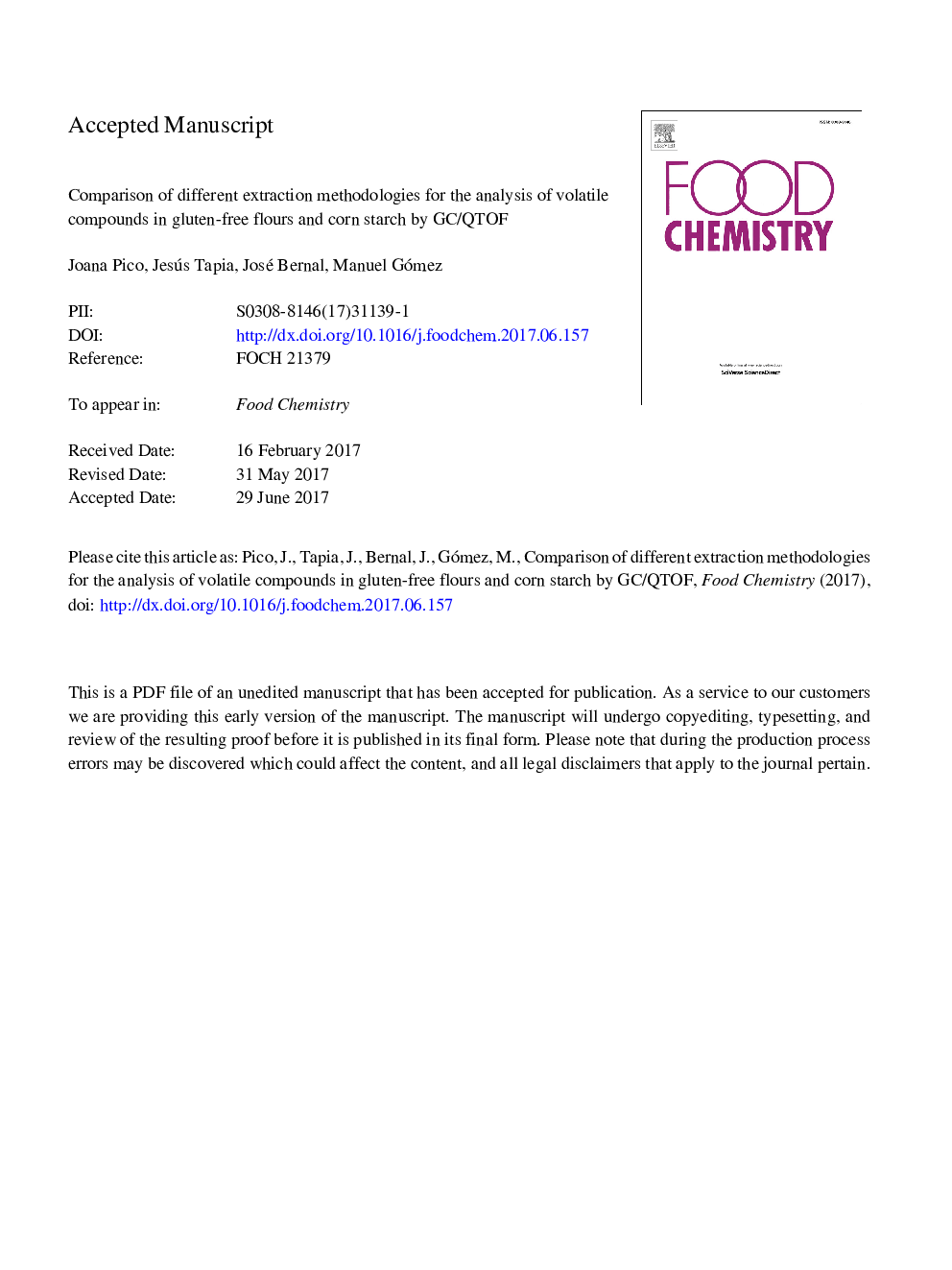| Article ID | Journal | Published Year | Pages | File Type |
|---|---|---|---|---|
| 7584500 | Food Chemistry | 2018 | 50 Pages |
Abstract
Gluten-free bakery products usually exhibit weak aroma. Their main constituents are flours and starches, which contain aroma precursors but can also contribute additional volatiles in low concentrations. Static headspace (SHS), solid-phase microextraction (SPME) and solvent-assisted flavour evaporation (SAFE) coupled to GC/QTOF were compared for their efficacy in the analysis of volatiles in corn starch. SPME-GC/QTOF was selected as the most suitable methodology based on the number of detected compounds, LODs, repeatability as well as simplicity. It was successfully applied for the quantification of volatiles in corn starch and qualitative comparison of different gluten-free flours. Hexanal, 3-methyl-1-butanol, 1-pentanol, 1-octen-3-ol, acetic acid, furfural, benzaldehyde, (E)-2-nonenal, phenylethyl alcohol and short-medium chain acids were found in all the flours and corn starch. Quinoa flour and corn starch showed the highest contents of pyrazines, terpenes and esters, while teff, buckwheat and rice flours presented the highest contents of 3/2-methyl-1-butanol, acetoin and organic acids.
Keywords
SPMESHSCCDRSDCarboxenLOQPDMSDVBPCAodour thresholdrelative standard deviationSAFEsolid-phase microextractionDesirability functionPrincipal component analysisVolatile compoundsdivinylbenzeneCentral composite designStatic headspaceLodCARlimit of quantificationlimit of detectionprincipal componentCorn starchpolytetrafluoroethylenePolydimethylsiloxane
Related Topics
Physical Sciences and Engineering
Chemistry
Analytical Chemistry
Authors
Joana Pico, Jesús Tapia, José Bernal, Manuel Gómez,
